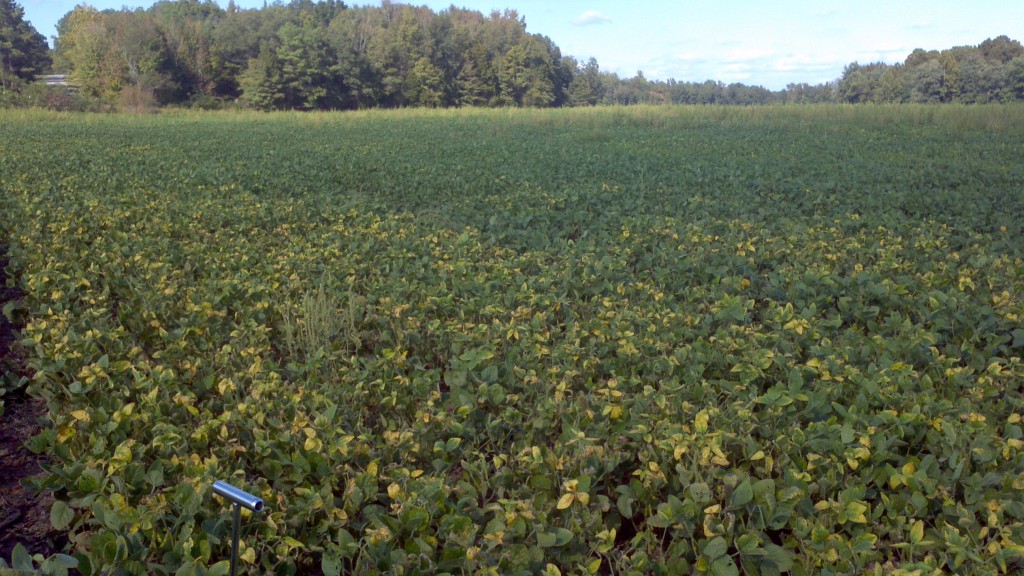It’s that time of year to sample fields for nematodes, especially problematic fields. Many fields that exhibit nutrient deficiencies may have nematode problems and the only way to know is to sample.
Correcting nutrient deficiencies in fields will not improve the crop if there is a nematode problem. With many fields staying in soybean it is important to sample for soybean cyst nematode so one can properly plan for next season (rotation, varieties, nematicide treatments, etc.). Similarly, if a field is continuously planted in cotton or was previously planted in cotton and is going to soybean the field should still be sampled for reniform nematodes, as they affect cotton and soybean.
Plant parasitic nematodes are nearly microscopic, worm-shaped animals that are in the same group as insects, arachnids, and crustaceans. They are virtually invisible to the naked eye in soil samples and can survive in soil for multiple years in the absence of a host plant and hence are rarely ever eradiated from a field. Both soybean cyst nematodes and reniform nematodes establish permanent feeding sites inside host roots, called syncytia, directly affecting yield as well as making plants more susceptible to other diseases that will further reduce yield. Fields that are continuously planted in soybean and cotton are at higher risk than fields in regular rotation. Once populations of nematodes reach economic thresholds rotation to non-host crops or resistant varieties and nematicide treatments are management options, but prevention is the best management practice. To prevent populations reaching economic threshold levels fields should be sampled regularly for nematodes to implement timely management practices (i.e. rotation to non-host, resistant variety, nematicide treatment).
To adequately sample for nematodes a one inch diameter soil probe should be used to collect samples 6 to 8 inches in depth from beneath the previous crop row or root area. Samples should be taken when the soil is moist – not when the soil is too wet or too dry, and right after harvest in the fall is the best time. A uniform, random sample should be taken for best results by sampling in a zig-zag pattern across a section of the field, taking 1 to 5 samples every 10 acres. The soil cores from each field should be placed together in a bucket and mixed thoroughly. Place about one quart of mixed soil in a plastic zippered bag and label it with a permanent marker. Samples should be stored in a cool, dark place, like the refrigerator, until shipping to nematode analysis lab. (Click here for the ‘Nematode Sampling How To’ instructions, found at UTcrops.com under Soybean, Diseases & Nematodes or contact your local county agent for more information)
A nematode sample form (found at UTcrops.com under Soybean, Diseases & Nematodes) should be filled out and mailed with soil sample to:
WTREC, Extension Lab C, 605 Airways Blvd. Jackson, TN 38301
Analysis for reniform nematodes from cotton field samples is $15.00 per sample and analysis for soybean cyst nematodes are free thanks to the Tennessee Soybean Promotion Board. Please make checks payable to University of Tennessee. Results will be emailed (or can be mailed) to producers in 2 to 3 weeks from receiving the sample.


